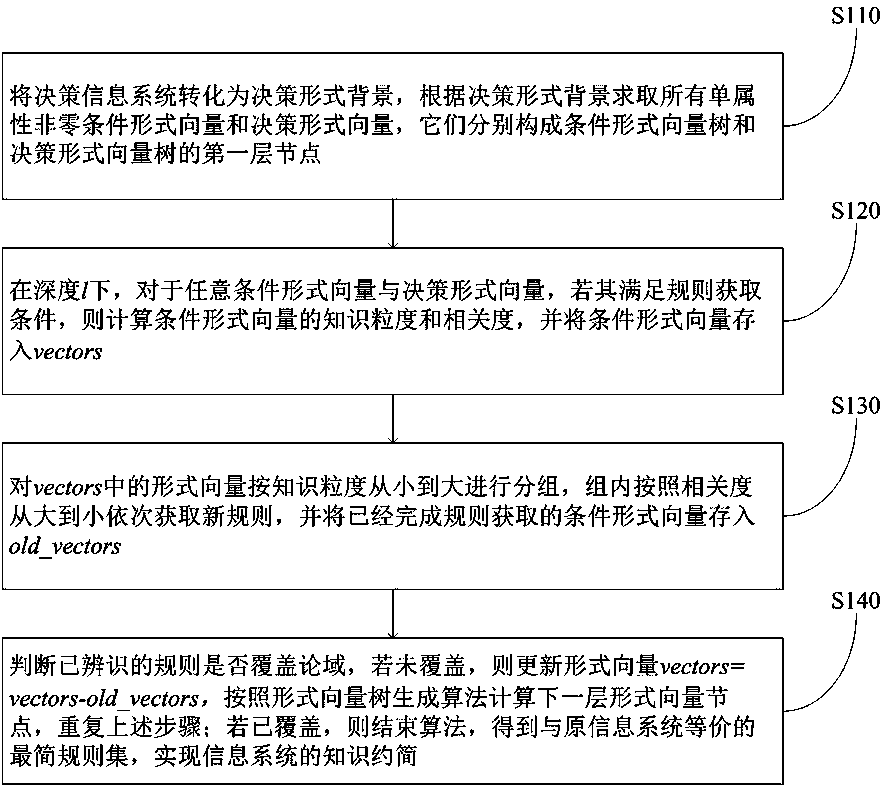A knowledge acquisition method of decision information system based on formal vector
A technology for decision-making information and knowledge acquisition, applied in the field of knowledge acquisition and knowledge reduction, it can solve problems such as loss of accuracy of knowledge reduction, and achieve the effect of realizing visualization, avoiding cumbersome operations, and high recognition rate.
- Summary
- Abstract
- Description
- Claims
- Application Information
AI Technical Summary
Problems solved by technology
Method used
Image
Examples
Embodiment Construction
[0049] The technical solutions of the present invention will be further described in more detail below in conjunction with specific embodiments. Obviously, the described embodiments are only some of the embodiments of the present invention, not all of them; based on the embodiments of the present invention, all other implementations obtained by those skilled in the art without creative work For example, all should belong to the protection scope of the present invention.
[0050] Granular computing is a mathematical model for analyzing and solving complex problems. Rough set theory, as one of the important branches, mainly uses approximation operators to approximate uncertain information, so that data can be analyzed and reasoned, and then the hidden knowledge in the data can be mined to reveal its internal laws. Formal concept analysis is a powerful tool for data analysis and rule acquisition based on formal background. As a representation model of knowledge, it mainly relies...
PUM
 Login to View More
Login to View More Abstract
Description
Claims
Application Information
 Login to View More
Login to View More - R&D
- Intellectual Property
- Life Sciences
- Materials
- Tech Scout
- Unparalleled Data Quality
- Higher Quality Content
- 60% Fewer Hallucinations
Browse by: Latest US Patents, China's latest patents, Technical Efficacy Thesaurus, Application Domain, Technology Topic, Popular Technical Reports.
© 2025 PatSnap. All rights reserved.Legal|Privacy policy|Modern Slavery Act Transparency Statement|Sitemap|About US| Contact US: help@patsnap.com



